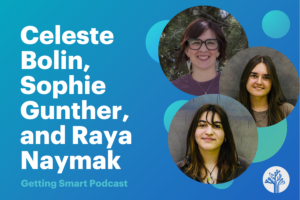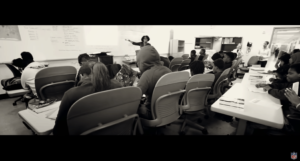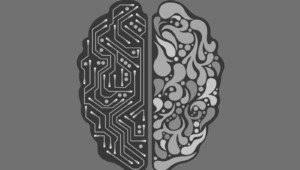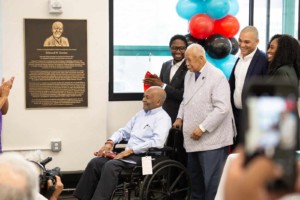John Super, AdvancePath President
AdvancePath is a dropout prevention/recovery network. Students are mostly 17-18 years old and are 1.5-2.5 years behind (often called over-aged, under-credited) and way off track for graduation. On average, they’ve been earning credits at about a quarter the normal rate and they quickly begin earning credit at 1.0-1.2x typical. The dramatic increase is because the show up every day and do the work because AdvancePath teachers help them build a viable plan for graduation.
What kind of students do you serve?
Each academy serves students grades 9-12, including students who are past their expected graduation date. A profile of these students will reveal they are typically made up of the largest minority group in the district and most have fallen behind academically and have begun to become significantly truant with some behavioral issues. There will be students who are referred by juvenile justice and others who have elected to return to school after dropping out. Increasingly, we are seeing students who left high school to enroll in charter schools but have found these schools are not meeting their needs. Additionally, many of these students have enrolled in independent study programs but found they do not have the self-discipline or academic skills to study independently. The advantage of the Academy is its brick and mortar program, usually constructed to provide two or three 4-hour learning sessions each day. Students may attend morning, afternoon or evening (not every district has an evening session). This flexibility provides students with a focused time for learning while tending to other personal needs that may include family, work, etc. It is not uncommon to find our students as care-givers for their parents, parents themselves, or living on their own and having to work and/or locate a place to stay on regular basis. Every kid at an AdvancePath academy has a story; most are working, some are parents.
How many AdvancePath academies are there?
23 in CA, AK, MD, MI (of these academies, 2 districts support 3 academies and 2 districts support 2 academies, with the balance each having one academy).
What curriculum do you use?
We use Apex primarily for core content and AEC A+ is used for electives, although some districts do use A+ for core content. Our goal with these curriculum resources, is to be able to differentiate instruction for students and ensure they can work at their own pace and at their skill level while engaging in the instructional delivery. Apex does allow us to scale from “literacy advantage” to “honors” courses and teachers receive the necessary professional development to assess where a student is and what course content will best support their learning. We do offer other content as needed and we also provide skills resiliency content through ScholarCentric Success Highways and WhyTry?.
Is learning 100% online?
The curriculum is all online, but there is some supplemental 1:1 and small group tutoring. The AdvancePath model (built on a review of 25+ years of research and hands-on day-to-day classroom experience) is a teacher-supported, technology-rich environment where students are working online with their course content but with teachers immediately available to support their learning needs. Students spend about 65-75% of their instructional team working on their courses with the support of a team of teachers. The balance of the team is spent in small group instruction (4-8 students) which is teacher-led and often presented on an interactive white board.
Additionally, students will typically have independent study assignments during the day as well and also one-on-one conferences with their caseload teacher. Finally, and especially when a student first enrolls, there will be parent-student-teacher conferences to review how a student is adapting to the academy learning model and how all can work together to improved the student’s academic performance. It is in this last area that the “GIG Chart” (My Goal is Graduation) is reviewed so the student and parent can see the gains the student is making and how they can plan to improve performance.
Is 50 students the limit of academy enrollment?
As a first step in establishing a partnership with a school district we conduct a feasibility study to assess the needs of the district and the ability of an academy to meet those needs. A profile of when students abandon their education is built and we further determine the likely number of students who could be served by the academy. As a general rule, an academy can be built to serve between 40 and 60 students per session, or 80-120 students over two sessions. Also, if appropriate, an evening session which can support another 25 to 50+ students can be added as well. As noted earlier, some districts position academies by high school service area, so we do see districts with 2-3 academies now in place to support their needs.
Most campuses run two four-hour sessions, a few have three shifts. There are 40-50 kids in each session.
What other kinds of educational services are offered?
This is determined by the feasibility study although the basic academy provides teacher-led support for resiliency courses and mentoring. Some academies are configured to support special education needs and others are configured to accelerate learning for juniors/seniors who are significantly behind academically. All provide some career and college planning resources and the lead teachers are supported in providing outside resources to help guide decision-making. Additionally, in most academies we place a community liaison who also has a responsibility to interact with local employers for both immediate and future job placements.
Do some students choose college prep?
Yes, a few. All students will have to pass their state’s exit exam to graduate and in many states the curriculum is aligned to meet requirements for admission to 4-year state colleges and universities. All academies interact with their local colleges and community colleges to assist students in college considerations.
How do you know when a student passes a course and is ready to graduate?
The courses offered are aligned to the district requirements and meet the same criteria as what is delivered in the classroom. All work is assigned and monitored by the teachers and each assessment provided is reviewed by the teachers. Students are generally required to work at an 80% mastery level which is verified by the teacher (although teachers may, at their option, accept 70% achievement) and the student must pass the final exam for the course in some districts. The teachers review a students work history and performance in the course and grants the passing grade once the course has been completed, entering in the electronic grade book and the student’s transcript is updated according to the partnered high school’s policies. As a student approaches graduation, all work is reviewed by the high school’s counselors and principal before the diploma is granted.
Students work at their own pace and take end of unit and end of course exams.
Where the state has a high school exit exam (like CA) they take that too.
Are all teachers credentialed?
AdvancePath hires district teachers who retain their tenure in the district and meet the same requirements as in the high schools. All teachers are certificated.
How do teachers work with students?
Teachers will build a plan with students to help them decide what courses to work on. We ensure through the hiring process teachers are certified and credentialed in the core content areas. The teachers each have a student caseload but share responsibility for supporting the students as a “team of teachers” in the academy. All teachers will interact with all students based upon their content expertise. Additionally, the teachers often agree as to who can serve best as the student’s mentor and this may or may not be the responsible caseload teacher. Working together, the teachers regularly discuss each student and their current and evolving needs. In a high performing academy, all teachers share information with each other and work proactively together to accelerate each student’s learning and help the student achieve timely graduation.








0 Comments
Leave a Comment
Your email address will not be published. All fields are required.